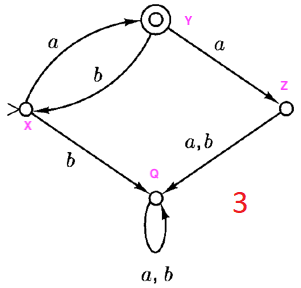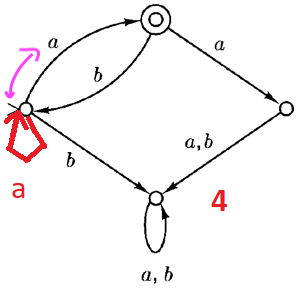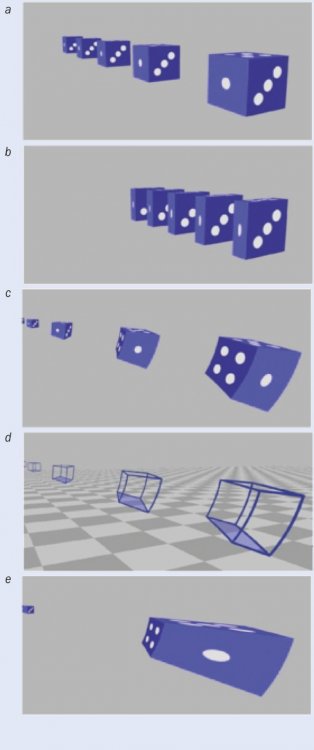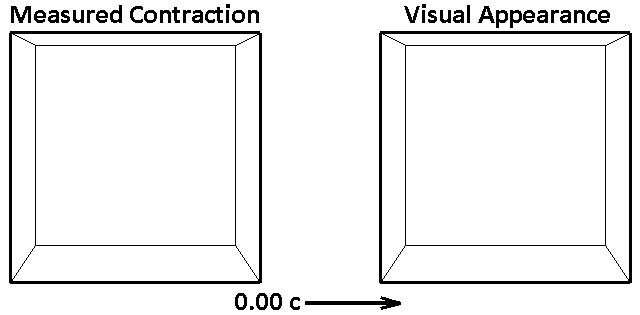Leaderboard
Popular Content
Showing content with the highest reputation on 09/22/20 in all areas
-
Fate is a strange dice that we do not control. We jump and try our best. I was born very poor. A family of survivors from the Second World War purge, not a Jew, nor a Kossac, not a Gipsy but part of them, só, no sides to shelter my grand parents. I was borm very poor and remeber starving. Brasil is not for amateurs! On the other side, the college is for free and you can get food and some clothes, só, I could attend the university amongst very rich kids. Do not know how but my grades very high enough to be there. It was a game, like jumping a circle of fire. Maybe I was able to jump but, after some jumps, there was nothing but stress, poverity and decepcion. I am not telling a personal history as if it were a glorious fight. I saw fights in my place. Native fight against miners, againt diseases. I saw poor girls fighting against misery and winning all the odds in an “male world”. I like Carlos Castañeda books. Once I was told he is totally fake but I like Don juan most of all and Don Juan says that a warrior must grab the 1mm³ of chances he/she got. I am very pragmatic. I do not mind my role in that teather. I am going to do my best and extract the fully joy of that act. I believe we are very talented and able to do the best face to the rules of the game we have to play I know people that cannot be that clever. I know people that complain the husband they choose (there is no arranged matrimonies im my place for 200 years!), they complain the age, no matter how old are they, the lack of courage or the lack opportunities, spite you spare them the best piece of that play. You are a warrior and I sense that. Just wanted to say that I know you did the best and grabbed all the chances. Best /\/ /\/2 points
-
Boiling point of compound is not constant and depends also on pressure. So you can try lowering pressure to boil excess of water. It is widely used method: https://en.wikipedia.org/wiki/Vacuum_drying ..with ready to use equipment: https://www.google.com/search?q=Vacuum+dryer (anyone serious about chemistry should have a vacuum pump anyway)2 points
-
One of the few things you've said I wholeheartedly agree with.2 points
-
I think there is no clear answer to that. Studies basically are looking it from two perspectives. One mechanistically, which looks at virus survival in droplets and ejection and the other is epidemiological where folks look at likelihood at being infected outside. From the latter viewpoint, it appears that casual outdoor infections are very rare and mostly connected with folks being close to each other. Mechanistically, evidence suggests that e.g. in saliva it would take minutes for sun-inactivation of SARS-CoV-2 (~6 minutes for 90% inactivation), so at least theoretically if someone sneezes in the air and you run straight through it, you might get exposed to active particles (sneezing on the ground would arguably be safer). But again, most evidence suggests that overall infection chances are low under these conditions.2 points
-
Michel has established that he's spent 20 years denying relativity. There are many, many hijacked threads over the decades, any that have certain keywords (in this case, "time, direction"), turned into 6+ pages of failed attempts to get him personally to accept something about SR. He's stated in this thread that he's not interested in relativity, and of all the hundreds and hundreds of answers to his repeated questions, not a single one of them he acknowledges as an answer to his questions. The only time I've seen any calculation or attempt to work through a problem, is when he's twisting his beliefs and made-up definitions into a nonsensical answer that confirms that relativity is wrong. Trying to understand relativity is destructive to his goals, and completely avoided. So the answer is yes, anything that shows relativity working will be ignored. If you're enjoying explaining it, that's good. If you're hoping Michel will learn something, ... I wouldn't.1 point
-
Lets name the states: purple letters X, Y, Z, Q. I assume Y is the accept state and X is the start state. I assume "repeated 'a's to be accepted in the final state" means that you mean if any sequence of "aa", "aaa", "aaaa" etc takes us from the starting state X to the accept state Y. -I assume we start from X -We get an "a" taking us to state Y. -We get another "a" and that takes us to Z. Since we are not in the accept state (Y) the answer is no, repeated "a" does not take us to the accept state. Let's continue: -From Z we can only reach Q, it does not matter if we get an "a" or "b". Assume we get another "a" -When "Q" is reached there is no way to proceed to another state than Q, any sequence of letters "a" and "b" will always reach "Q" I guess the DFA (3) accepts any sequence that is a repetition of "ab" followed by "a". Example: "aba" "ababa" "ababababa"1 point
-
1 point
-
It's not hypothetical. The US farming/ slaughterhouse practice isn't designed to avoid contamination because they always plan to sluice it with bleach. "For years, in the US, instead of preventing that chickens get infected with pathogens during all stages of rearing and slaughter, the poultry industry has resorted to chemicals to eliminate bacteria at the end of the meat production chain. In other words, chemical washes aim to make up for inadequate hygiene on farms and abattoirs." https://www.beuc.eu/blog/what-is-wrong-with-chlorinated-chicken/ "US’s salmonella problem has been particularly hard to control. The USDA doesn’t treat salmonella as an “adulterant,” meaning unlike E. Coli, salmonella contamination won’t trigger a recall. The USDA began routinely testing chicken for salmonella in February 2016, and finally set a “maximum acceptable” rate of contamination at 15.4%." https://qz.com/1037737/will-post-brexit-uk-swallow-americas-chlorinated-chicken-for-a-trade-deal/1 point
-
1 point
-
I'm voting for appallingly cynical. Just because you feel that way doesn't mean the rest of us do.1 point
-
Is there really chicken shit on the chicken or do you object to the fact that shit once touched the chicken? Does the FDA allow shit on chicken that is sold to the public? I realize there may be some minimal amount of residue, but you also cannot eat a sandwich without eating grasshopper guts, or a salad without some bird shit on it.1 point
-
Please do so but i'm not sure I trust you with deriving the visual results from special relativity on what you would see so when you get there stick to classical physics. . . unless you can show us the mathematical rigor needed. Yes, there is also a classical assumption that would play into this and give rather predictive results as to how it would exactly look. Cut your teeth on this article I found. Hmmmm. . . I found it! There is a difference between length contraction (measured) and what is observed which respectively would be (b) versus (c) as well as what you would expect with naive classical physics (e). (a) A row of dice at rest moving from left to right in a single file at 95% of the speed of light. (b) The moving dice are length contracted, so that one might (wrongly) expect them to look as here. (c) If you actually observe the dice, however, they will appear rotated. (d) But when some perception in depth is provided, you’d see them as sheared rather than rotated. (e) Shown here is the predicted “classical” appearance of the dice, with no length contraction. You can view a short film of part c online here. (Courtesy: U Kraus 2008 Eur. J. Phys. 29 1) You better have read the articles above and looked at the image as well as considered that there is a strong difference between what length you measure an object to have and distorted image you see.1 point
-
I don't see what the problem is. D Trump was right. Large portions of the American population HAVE developed 'herd mentality'.1 point
-
No, it's not. Length and time contraction are some kind of foreshortening. But the angle analogue is v/c, and it's based on the geometry of a hyperbola, not of a sphere (or circle). But never mind that now. And it is an observer-dependent effect. If for some reason you are thinking that the object you're looking at doesn't have the length you seem to perceive, you may choose to change the angle and you'll see something different. But exactly the same as the foreshortened arm has a proper length (invariant), moving objects have a proper time (their co-moving time). About 'twins' trips: Exactly the same as you can go from one corner of a square 9 m² room (of 3 m-wide walls) to the contiguous one along the wall, measuring a distance of 3 meters, you may decide go to the contiguous corner the long way, by sequentially covering the other two corners, and cover 9 m (3+3+3) around the other direction. That's exactly the same that happens to the non-inertial twin that went around to the same place on a non-inertial trip. The first twin has gone along a flat wall and has noticed nothing significant. The non-inertial twin has had to cross two corners and has noticed curvature. I'm not sure I'm helping with this alternative explanation. If not, feel free to ignore me. I'm amazed by the patience displayed here by almost everybody else here, TBH. They don't give up on you. They just don't. I confess my inability as of today of concocting such careful and detailed Alice-Bob analyses as have been offered to you. I have a tendency to search for shortcuts. Edit: Rather than shortcuts, to concentrate on the formalism and learn to relax about puzzling un-intuitive notions. I do mistrust my intuitive notions.1 point
-
I'm pretty sure that a telescope is an instrument. The point is that, at the time people were drawing pictures of "canals on Mars", they were struggling against the resolution of their telescopes. Now they are struggling against the resolution of their spectroscopes. Steam engines were invented at steam engine time. Up until relatively recently, millimeter wave spectroscopy was so impractical that nobody did it. The technology has changed but it's still not a mature technology. A bit like the old telescopes. It's a valid comparison.1 point
-
It does only happen in the direction of motion as is or would be derived from the Lorentz transformation. If you have some other mathematical model to propose in which the object doesn't just contract in the direction of motion but in every direction equally or by some function of the velocity be my guest. . . propose it and test it. Further, "time dilation has no direction" why does this have to be a problem. . . why is this a problem for length contraction? Again you can propose some inhomogeneity or anisotropic effects that if a clock went in one direction it would slow more than in another in a round trip. . . be my guest in mathematically realizing this and testing it. You cannot just assume there is this immaterial Newtonian Clock that ticks throughout the universe and some how also minimally interacts with everything in the process assigning a precise time measurement anywhere in the universe. . . you cannot just claim this by fiat. Further, you literally DO NOT HAVE TO LEAVE GALILEAN RELATIVITY or classical physics to have your "multiple realities". Remember the Galilean transformation? Through this transformation you can transform from one INERTIAL frame to another without issue and thusly could show that the laws of physics (conservation of energy/linear and angular momentum) were followed in both frames of reference just as YOU will see the other frame moving away from you with some velocity (they are not identical frames of reference then) according to your frame of reference. . . wait. . . but the velocity was opposite that way in the other inertial frame of reference. . . which is the right velocity? In which the answer to said question is that this is a nonsense question as only a velocity assigned to a particular frame of reference (even the almighty stationary one) is what matters as you can only ask what velocity an object has with RESPECT to a particular frame of reference. In special relativity this idea is merely extended to measurements of lengths as well as clock ticks seen from your frame of reference. Again, you do not need to leave classical physics to see the fault in seeing this as a problem. Imagine you have a spaceship and a lone spaceman out in the middle of space at rest with respect to each other. The spaceship rockets away accelerating up then slows down to speed up in the opposite direction before slowing down again to enter the original frame of reference it resided in at the beginning. You both ask each other who really moved? First Person: I clearly didn't as I saw you speed away and during the whole time I remained at rest with respect to myself. I wasn't moving. Second Person: But I also saw myself as at rest the whole time. When you think about it kinematically and visually they both have some grounds to consider themselves both correct as there space-time diagrams would show similar but oppositely oriented collections of parabolic curves. To alleviate the issue we decide to mount an apprautus to the spaceship that is basically a small ball within a larger ball where the smaller ball is floating freely but the larger ball is attached to the spaceship. If we accelerated forward then the freely floating ball would just slowly float in the air until the now moving outer surface closed the distance and then impacted it. If we were in an inertial frame of reference the whole time then clearly the ball within there would just float as you would expect via our classical understanding of physics and inertial frames of reference (frames without any induced forces). You then both repeat the same experiment and predictably the floating spaceman would never notice any forces (fictitious or real) creep into his frame of reference while those in the spaceship would see their smaller ball begin to move as if some force was exerted on it but (assuming they accounted for all other forces) this cannot be as it clearly must remain inertial as we accounted for all forces. The only real answer is that a force was exerted on the spaceship which gave rise to our fictitious force on the ball. Thus the paradox is solved. . . the spaceship was the one that moved. With two inertial frames of reference (one moving away at constant velocity) you couldn't really do this because the paradox requires the frames come back together and if they both accelerated away then came back together they would still see the fictitious forces arise in their respective frames of reference. Just as in Galilean or classical physics there is NO RELATIVITY OF NON-INERTIAL FRAMES OF REFERENCE so is the case in special relativity because. . . you know. . . its first postulate is that all inertial frames of reference are equivalent not ALL NON-INERTIAL FRAMES OF REFERENCE ARE EQUIVALENT or ALL FRAMES OF REFERENCE ARE EQUIVALENT. Which would be required for the twin paradox in that one of them has to turn around so to speak or both equally turn around but in the process in both situations their are people objectively changing inertial frames of reference. In the later case, however, given they accelerated for the same amount of proper time (slowed then speed up to come back) they would have identical world lines and there wouldn't be any net time difference with respect to each other when they re-enter the original inertial frame of reference because they would be entirely symmetric. . . the people in the original frame of reference however would notice that they were both equally younger assuming they remained inertial (we could as an experiment or mathematically set up a similar ball apparatus as before). This is an issue I see all the time in people trying to grasp relativity. In the theory (with minimal ontological assumptions of Minkowski spacetime) while you have this effect of length contraction that is rather mathematically explicit even by theory or ontology what you would actually observe is something like. . . In fact I'm pretty sure there is even a further different classical perspective of the cube that you would expect which does differ from the visual image seen above that special relativity would, being approximately correct, in the end expect. @swansont How'd I do?1 point
-
The canals were debunked well over a hundred years ago. The sightings involved no instrument readings, just antique telescopes with no photography. You should study up, they've stopped using orreries at NASA.1 point
-
You are correct. You could modify it to have a final state somewhere that transitions on some other letter like c? A DFA must end on a final state e.g. the 2 circles. Starting from q3 you can accept aa as it will transition to q0 then q1. Starting from q1 you can accept bb as it will transition to q0 them q3. You can read more than one letter at a time and make all final states lead to an exit state if it reads them. You can use anything that fits in combinatorial logic including don't care terms to read a regex e.g. BxBxxxB. ***** Challenge Question ***** A DFA is a part of a Turing machine. Show that a 3 head Turing Machine can accept the regex B*B*B without changing state by creating a table of moves. Hint. You may stop moving a read head if you read a letter.1 point
-
I have to advise caution in the interpretation of food-borne disease illnesses. Countries have different ways to identify and quantify outbreaks and one cannot easily just look at the raw data. There is also a difference between severity which makes it even trickier. One way to normalize the data is to calculate disability adjusted life years (DALY), which basically is an estimate of years lost to ill-health or death. From there and using WHO data there is not a vast difference between the North American region (USA, Canada, Cuba, 35 DALY per 100,000 ) vs Western Europe (40-50 DALY per 100,000; I do not have finer grained data on hand). While there are significant differences in the type of diseases. there is not a huge difference when it comes to Salmonella infections. In fact, it is slightly lower in the NA region (9 vs 12), though it is difficult to disentangle the effects of animal handling, food production, impact of chlorination and the health care system. However, the point is that it the calculated health burden are the totality of all these measures. I.e. it is possible that without chlorination the DALY might increase in the US, which would indicate that Europe is doing something better without the need for it. Or it may not make a difference, indicating that the practice is useless. But the tricky bit is really finding which elements in the whole chain are really protective, especially as certain elements may rely on other part of the whole thing. So as a whole it is not trivial to state whether the whole food chain is safer in Europe vs North America (or even US specifically). Each regulations seem to keep the burden of food-borne diseases somewhat similarly in check, but there are also other benefits when it comes to different approaches in regulating the food chain. But again, I think direct comparisons are difficult, not least because rules and regulations in each region are not necessarily based on best science, but rather a quagmire of heavily politicized historic rules, regulation and practices. With increasing globalization the food supply chain has become even more complex and I have severe doubt that regulations are keeping up.1 point
-
That's a very big positive. The way I see it, academia advances in small steps. It is of course necessary, and immensely valuable. But perhaps the most significant big leaps are taken by people who are carefree, driven by an honest need to understand. They connect many more dots. They have time on their side. That's what I believe.1 point
-
I wouldn't get too excited about marginal instrument readings from a distant planet such as Venus. This has happened before, in the case of the similarly distant planet Mars. You know what I mean - the "canals".1 point
-
Forget about vacuum implementation. Tankless toilets can simplify this issue. Tankless toilets have become popular in recent days. This is not only for their high-tech, compact, and fashionable design but they also come without a tank. Unlike regular toilets, they don’t have water in their tanks and directly connected to the water supply pipes. So, how the water draws into the bowl? Well, small electric pumps are used. As some models allow the water flow to be regulated electronically, they tend to be eco-friendlier. When I was at Urban Assembly New Work Harbor School hostel, I noticed the authority like to use tankless toilets as they are also ideal to fix in tight spots. Note that- that place was also in a non-residential area.1 point
-
Everyone feels that way really. It's just that most people don't like to display it. That's understandable. And not at all a bad thing. What would happen to families, and society, and civilisation, if we all displayed the truth to each other all the time. We'd be mere inconsiderate animals. The uniqueness of humans is precisely our capacity to lie about our true feelings, in order not to hurt others.-1 points















